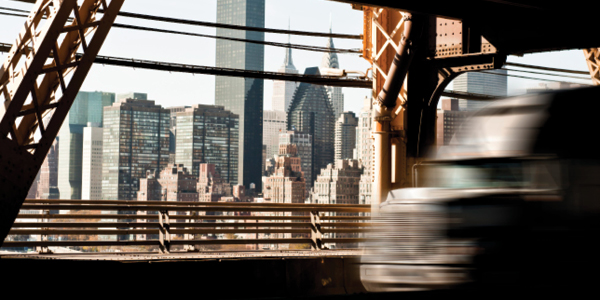Big Apple Polishes Freight Transportation System

New York City plans to overhaul its aging freight distribution systems through strategic investments to modernize maritime and rail assets and create new distribution facilities. Freight NYC is a $100-million plan with the ultimate goals of creating nearly 5,000 good-paying jobs for New Yorkers and a more sustainable and resilient supply chain network.
New York City depends on crucial but aging marine, rail, and highway infrastructure and relies upon trucks to move nearly 90 percent of freight. As the city’s population continues to grow, and consumers increasingly demand near-instant deliveries, local freight volumes will grow an estimated 68 percent by 2045, further choking traffic and impeding commerce.
This challenge is particularly acute in the last mile of distribution, when trucks deliver goods from port facilities and central warehouses, often located in neighboring states such as New Jersey, over city streets and arteries.
In addition to investing in existing maritime and rail assets, the city will work with private partners to build new modern distribution, transload, and warehousing facilities, and to promote and incentivize the use of environmentally friendly green trucks for last-mile delivery. In total, Freight NYC will remove 15,000 vehicles’ worth of CO2 per year.
The Freight NYC plan leverages three key strategies to modernize and strengthen the city’s freight distribution industry for the 21st-century:
- Investing in multimodal infrastructure. Working with the Port Authority of NY & NJ, the city will invest in marine terminals and barge operations, and support the modernization and expansion of rail lines and freight facilities, creating approximately 900 jobs.
- Creating new freight distribution hubs. Through public-private partnerships, the city will develop new distribution, warehousing, and transload facilities to meet increasing demand. This will help ensure New York City can sustain the demands of its growing population, while creating secondary pathways to move goods in the event of adverse climate impact and other major disruptions.
- Promoting the use of clean trucks. The city, led by the New York City Department of Transportation, will encourage the deployment of cutting-edge and emission-free trucks on city streets for last-mile delivery, which will help advance its goal of reducing 80 percent of gas emissions by 2050.
